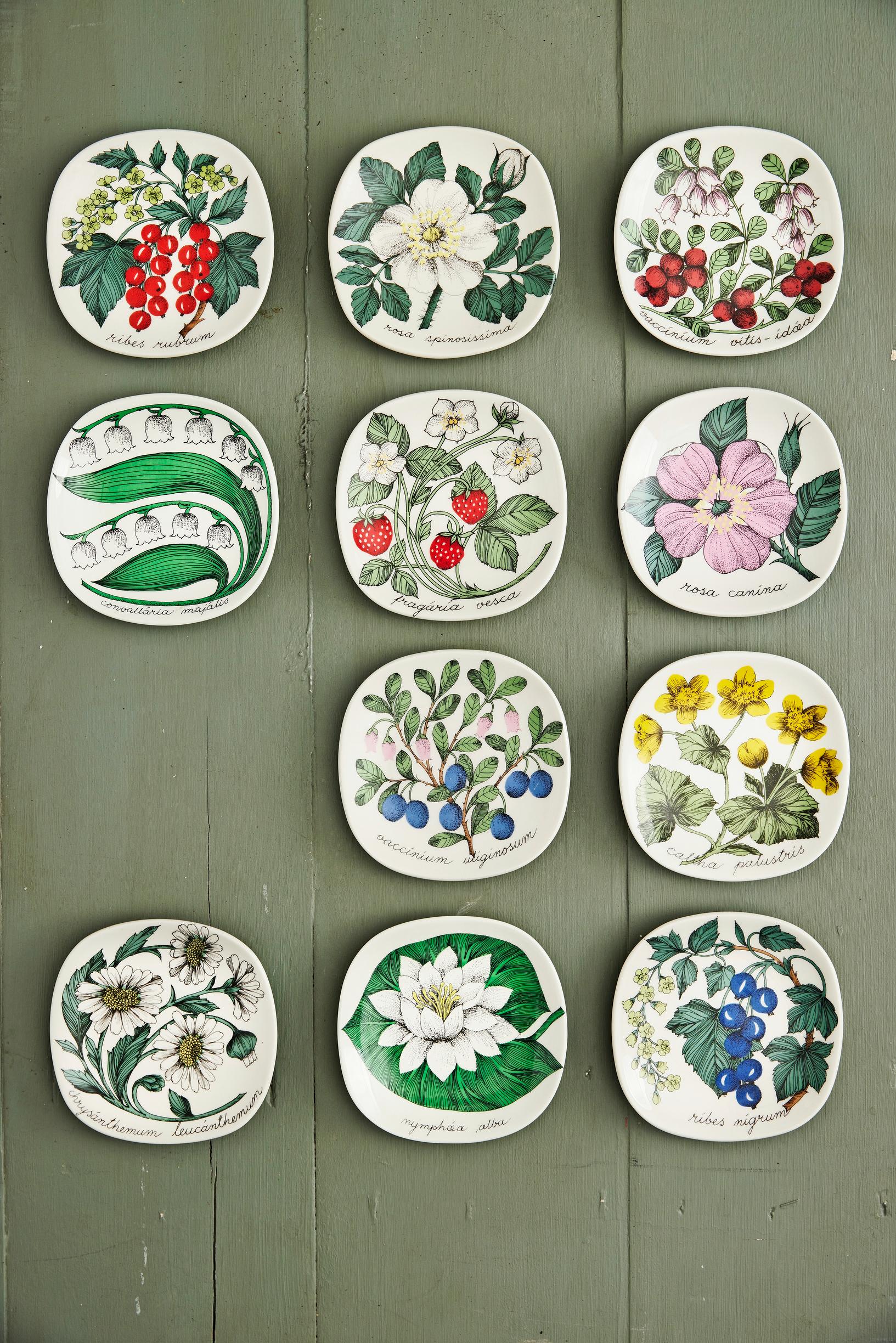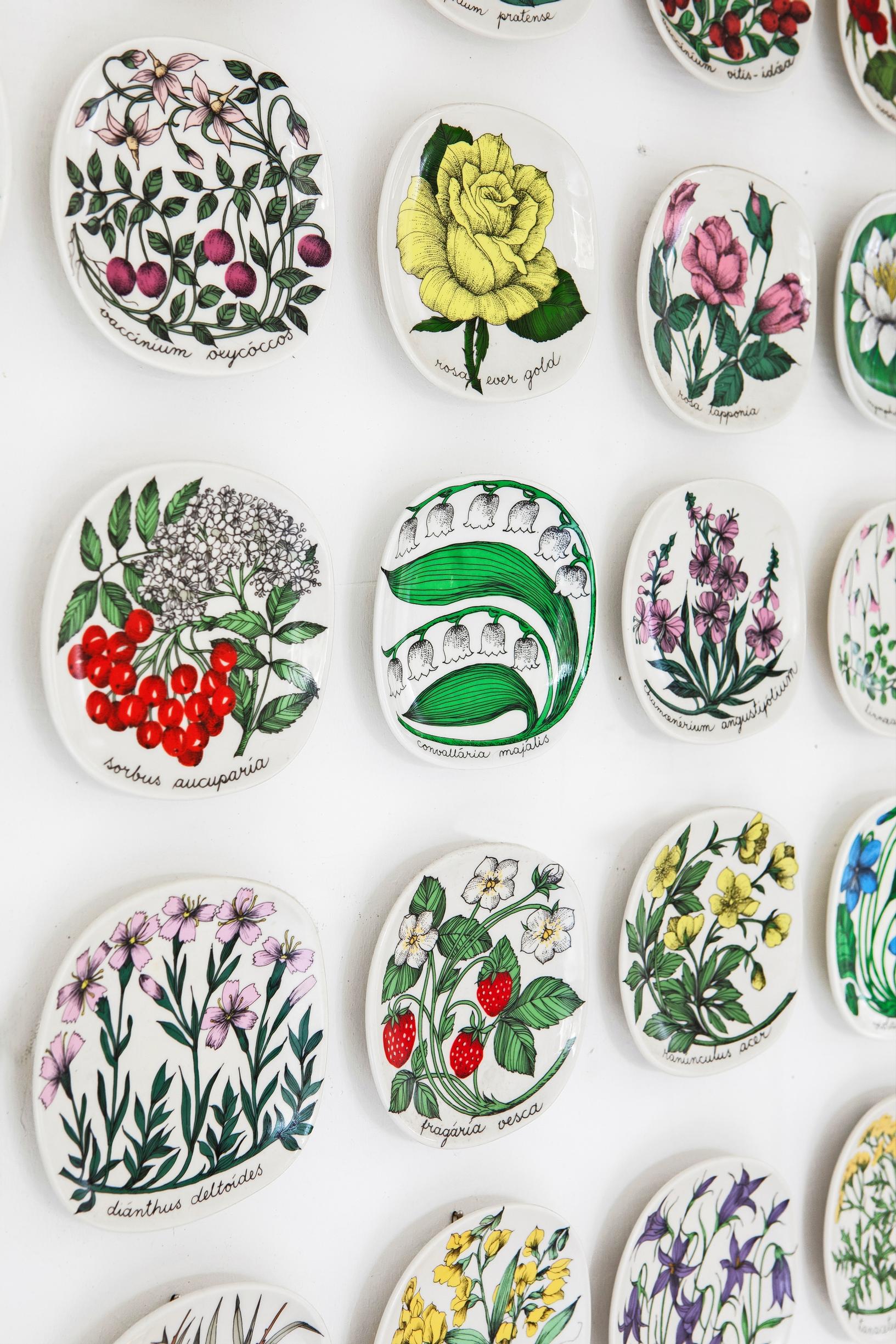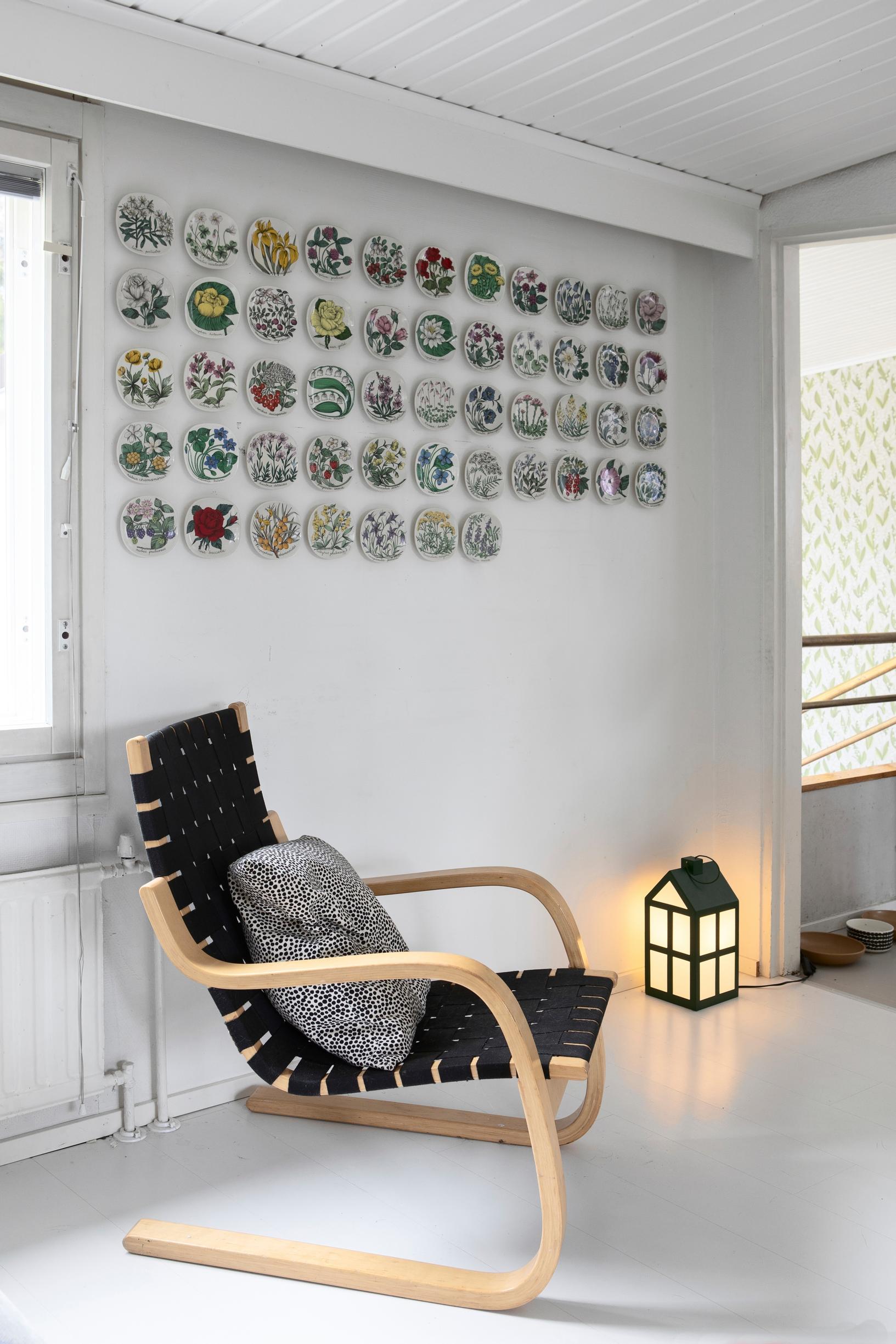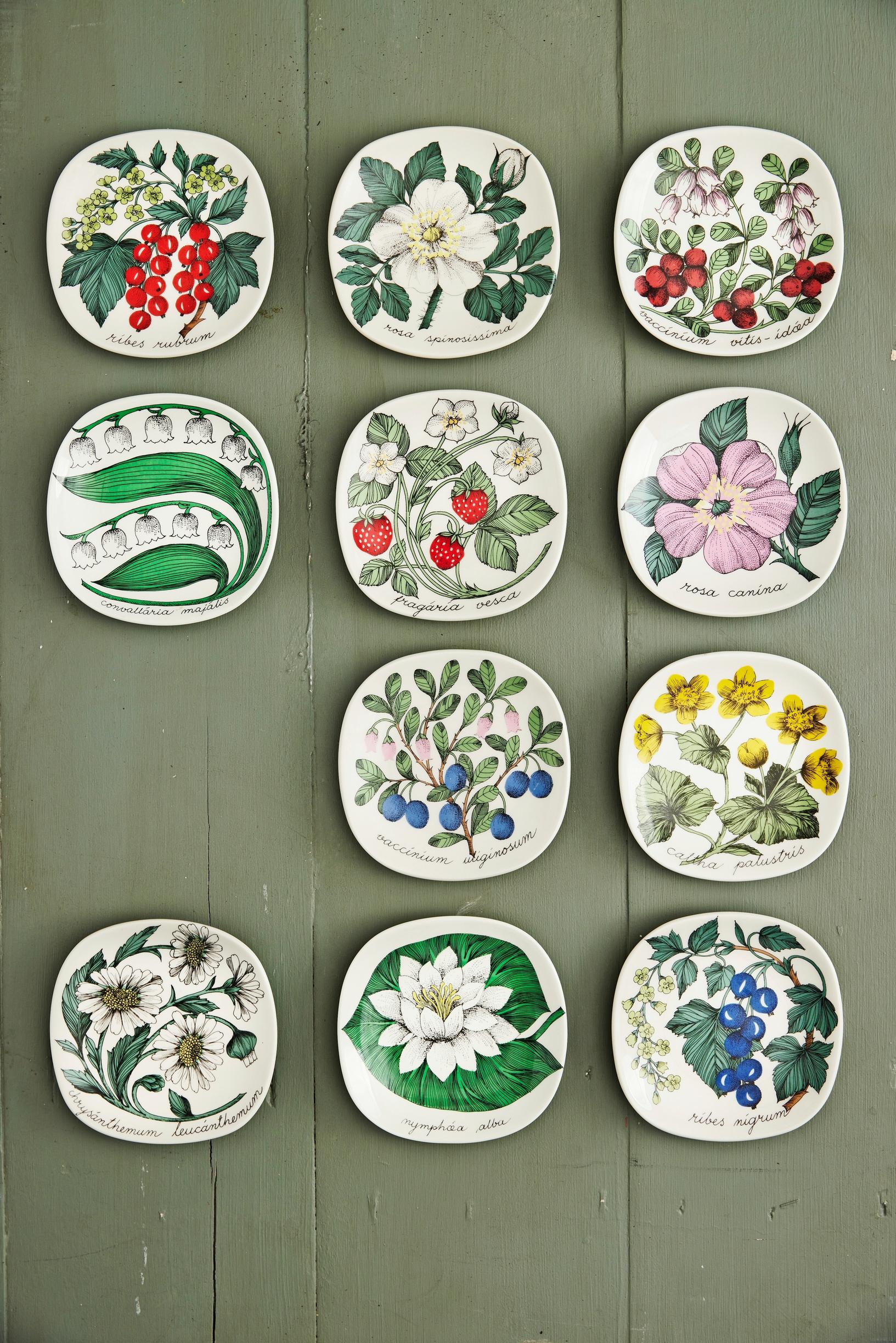
Irresistible vintage plates: Esteri Tomula’s charming wall plates still captivate new generations
Is there a Finnish summer house without at least one decorative plate on the wall? Esteri Tomula's artwork for Arabia brings warmth with wildflowers, roses, and berries.
Hanging plates on the wall for guests to admire goes back centuries and has been common in both grand homes and humble dwellings.
Genuine wall plates sometimes spark a full-fledged collecting phenomenon, which is why the Finnish company Arabia has excelled over the decades in producing a variety of plate series.
One of the best-known is Raija Uosikkinen’s Kalevala series from the 1970s and ’80s, which delighted many but also occasionally caused controversy.
Among the most delicate decorative plate series, still looking summery and fresh, are Esteri Tomula’s graceful Botanica and Rosa collections. Along with the small wall plates, both lines include narrow cylindrical vases.

Ilta Esteri Tomula, also known as “Essu” (1920–1998), began working as a decorative artist at Arabia in 1947. She studied at the Central School of Industrial Arts, also called Ateneum, where her skill in drawing led her to choose porcelain painting as her major.
Her wide-ranging and enduring body of work spans five decades of design trends, but Tomula is particularly celebrated for her lush botanical motifs. She drew inspiration from a summer home in Hanhisuo, Urjala, bought by her professor father for the family. There, she developed a deep appreciation for the subtle details of Finnish nature.
As an adult, Esteri Tomula spent every holiday in Hanhisuo for as long as her physical condition allowed. Her health played a notably significant and sometimes demanding role in her life. Because of her congenital short stature, she faced mobility challenges that shaped her life choices.
These decorations call to mind Eino Leino’s Nocturne.
Tomula’s gift for composition and her skill with line and color are exceptionally refined. In the 1950s, she merged her printed designs with hand-painted details: outlines were printed, and the colors and finishing touches were added by hand. Arabia acquired its silkscreen facility around the turn of the 1950s and ’60s.
Collector plates are part of Tomula’s later work. She kept creating new designs for wall plates even after retiring from Arabia, where she worked until 1984.
The 36 Botanica wall plates were produced between 1978 and 1989, and were supplemented by 17 Rosa plates with rose motifs, plus 12 featuring forest berries.

In the wild strawberries, harebells, speedwells, marsh tea, twinflowers, and lingonberries of these series, you can sense the same devotion to Finnish nature as in Finnish poet Eino Leino’s classic poem Nocturne: “...fragrant twinflower, shortening, lingering shade; these the things from which my heart-song’s made.” (translation by Rupert Moreton)
Tomula’s wall plates often feature a bold botanical motif. Beneath it, in her own cursive, is the plant’s Latin name. On the back, you’ll find Arabia’s factory stamp, a hanging cord, and the text Design. Esteri Tomula.
Along with ceramics, these nature-inspired designs also appeared on the enameled pots and bowls that became popular in the 1960s. Tomula decorated Finel’s enameled pots and saucepans with stylized Vegeta vegetables (1963) and a fanciful fish motif called Neptun (1965).
Compared to many of her colleagues at Arabia, Esteri Tomula’s themes were considered “modest,” but only in name, because her beautifully decorated plates and wall pieces hold their own among the factory’s other creations.
The imagery is both delicate and lush, subtle yet vibrant—striking even though it reflects Finland’s short summer, showcasing everything from tiny roadside blossoms to the forest’s bounty.
During her retirement, Esteri Tomula received support from a devoted circle of friends who helped with everyday challenges. She also became well known among Helsinki taxi drivers, who transported her from Damaskuksentie road near the Arabia factory to her new home in the Kruununhaka district and on to Toimela community college, where she taught porcelain painting into her seventies.




